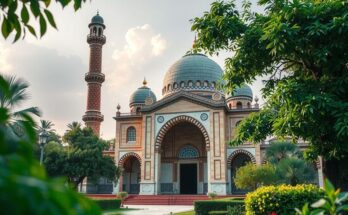Unraveling Avar Ancestry: A Study of Cultural Integration
The enigmatic Avars arrived in Central Europe from East Asia during the 6th century AD, merging with diverse local populations. New genetic research aims to unravel whether the individuals buried in 8th-century sites were descendants of Avar conquerors, indigenous locals, or a blend of both.
Genetic Distinctions Among Communities
In their groundbreaking study published in Nature, researchers analyzed ancient DNA from burial sites at Mödling and Leobersdorf, near Vienna. Findings revealed genetic distinctions; Leobersdorf inhabitants showcased East Asian ancestry, whereas Mödling’s population traced predominantly back to European roots. “The genetic difference between these groups was very clear and consistent for most individuals at the sites,” noted lead author Ke Wang.
A Shared Cultural Heritage
Despite genetic differences, the two groups exhibited striking similarities in culture and lifestyle, pointing to a cohesive identity as Avars during this era. Historian Walter Pohl commented, “The cultural integration apparently worked despite major genetic differences, and these people were obviously regarded as Avars.”
A Peaceful Society
Interestingly, the period in the Vienna Basin was marked by peace, contrary to the Avar’s reputation as fierce warriors. Anthropologist Doris Pany-Kucera remarked, “We find no battle injuries on the skeletons and there are hardly any signs of deficiencies.” This peaceful coexistence is further indicated by the scarcity of weapon remains in graves.
Complex Kinship and Marital Practices
The study uncovered a remarkable family network among the deceased, allowing researchers to establish six-generation-long family trees. Zuzana Hofmanová highlighted that almost no mothers had local ancestors, indicating they hailed from various regions. Nonetheless, partner selection practices preserved their diverse ancestries, with Leobersdorf’s mothers likely descending from Avar centers, while Mödling’s were of European descent.
Potential for Future Research
This research represents one of the largest genetic investigations of burial grounds to date, opening doors for interdisciplinary studies. Johannes Krause stated, “Mödling burial ground is one of the largest ever analyzed genetically, and such results hold a lot of potential for future research in various disciplines.” The findings elevate our understanding of cultural unity amidst genetic diversity in early medieval societies.
– Research on Avar burial sites reveals genetic diversity among communities. – Leobersdorf has predominantly East Asian ancestry; Mödling connects more to European roots. – Despite differences, a cohesive Avar cultural identity emerged. – The period was peaceful with few signs of conflict. – The study opens avenues for future interdisciplinary research.
The study reveals how the Avar period in East Central Europe was characterized by both genetic diversity and cultural unity. While the communities at Mödling and Leobersdorf exhibited distinct genetic backgrounds, they shared a common cultural identity. The findings challenge previous perceptions of the Avars as solely warriors, showcasing a society that thrived in peaceful coexistence through diverse yet interconnected lifestyles.
Original Source: www.medievalists.net



